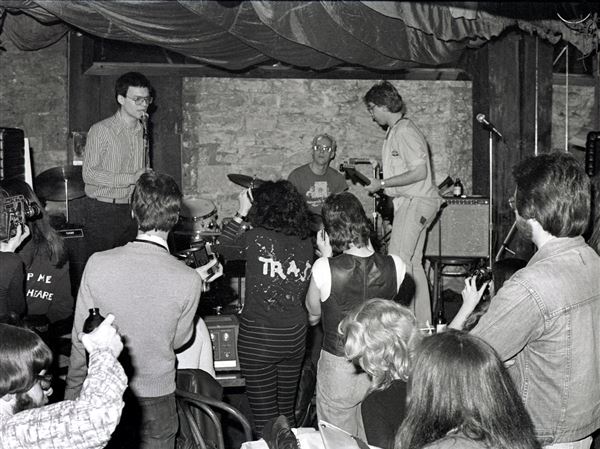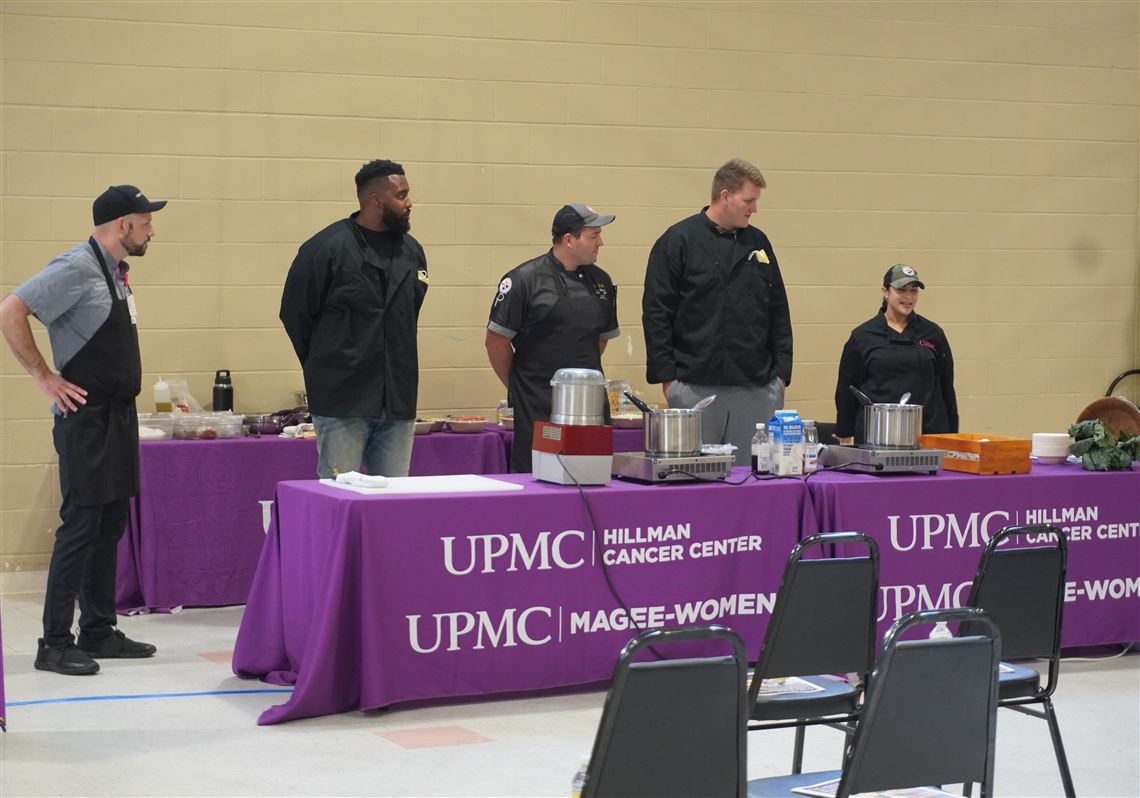According to the American Cancer Society, eating well before, during and after treatment can help cancer patients feel better and stay stronger. But the illness itself, as well as the side effects of treatments, can affect patients’ appetites.
To encourage good nutrition for cancer patients, UPMC teamed up with Pittsburgh Steelers players Trent Scott and John Leglue during Breast Cancer Awareness Month on Tuesday, Oct. 25 at the YWCA in Homewood to teach cancer patients and survivors how to prepare delicious and healthy meals.
The Pittsburgh Steelers are joining the efforts of the entire National Football League in the A Crucial Catch campaign, an effort to bring more awareness to the need for early and yearly breast cancer screenings.
This was the second of two events, the first held at Acrisure Stadium on Oct. 18. Steelers Isaiahh Loudermilk and Robert Spillane took on the challenge of cooking on that day.
The two key ingredients that were used in all the recipes, which included breakfast, lunch, and dinner, were kale and quinoa.
There to lend a helping hand were Jon Polley, executive chef, Food and Nutrition Services, UPMC Magee Women’s Hospital and Angela Zaccagnini, MS, RD, CSO, LDN, dietitian, UPMC Hillman Cancer Center.
In a recent UPMC podcast on foods that fight cancer, available as a YouTube video, Zaccagnini explained that she emphasizes a plant-based diet for patients because it can help fight inflammation.
“That doesn’t mean being vegan or vegetarian by any means,” she said. “It’s just increasing fruits and vegetables, whole grains, beans, lentils, soy foods like tofu, tempeh, edamame.”
She noted that in the United States, many people consume fast foods and convenient processed foods. “Those are actually considered pro-inflammatory foods that could promote disease and infection.”
At the October events, participants prepared five recipes on site to show how easy and quick cooking healthy can be if you know what to do.
For breakfast, they made a Cinnamon Quinoa Breakfast Bowl and a Kale Pineapple Smoothie.
Lunch was a Honeycrisp Kale Salad with Popped Quinoa. Dinner consisted of Quinoa Burger Sliders and a side of Quick-Braised Kale.
Those in attendance were also given the chance to sample all the items prepared by the players and UPMC team members to allow them to see how healthy can also mean delicious.
“When we were deciding on those recipes, I chose quinoa as our superstar ingredient and Jon chose the kale,” said Zaccagnini. “I love quinoa because it’s a good source of protein and it’s also gluten free.”
As the patients and survivors learned how to cook the meals, important health information and tips were also provided.
“Kale can be intimidating because, yes, it has to cook for a while,” said Polley, “so one super-secret trick is to eat it raw with some really delicious things.”
The American Cancer Society acknowledges that during cancer treatment, a patient’s particular needs may call for eating food not always considered healthy. “For instance, you might need high-protein, high-calorie foods to keep up your weight, or thick, cool foods like ice cream or milkshakes because sores in your mouth and throat are making it hard to eat anything,” it says. “The type of cancer, your treatment, and any side effects you have must be considered when trying to figure out the best ways to get the nutrition your body needs.”
Cinnamon Quinoa Breakfast Bowl
1/2 cup uncooked quinoa
1 cup almond milk, plain or vanilla
1 to 2 cinnamon sticks
Piece of a vanilla bean, or 1/2 teaspoon pure vanilla extract
Pinch of salt
Topping options:
Toasted sliced almonds
Toasted coconut flakes
Peaches
Raspberries
Maple syrup
Extra splashes of almond milk
More spices, to taste (cinnamon, nutmeg, etc.)
Rinse and drain the quinoa.
Place it in a small saucepan and add the almond milk, 1 to 2 cinnamon sticks, vanilla and a pinch of salt. Bring to a high simmer, cover, and reduce heat to a low simmer for 15 minutes. (Tip: Don’t walk away. If it starts bubbling, turn the heat off, give it one stir mid-cook if you need to, and resume).
After 15 minutes, remove the pan from the heat and let the quinoa sit for 5 more minutes or until the almond milk is absorbed and the quinoa is cooked. Taste and add additional spices to your liking.
Scoop the quinoa into two bowls and top with toasted almonds, toasted coconut, and fruit. Serve with maple syrup if you like. Enjoy as a fluffy pilaf or as a porridge with warm almond milk.
— UPMC
UPMC’s nutritional analysis for the base breakfast bowl, without additional ingredients:
362 calories / 13g protein / 8g fat / 57g carbohydrates / 7g fiber
Per serving (1/2 recipe): 181 calories / 6.5g protein / 4g fat / 28.5g carbohydrates / 3.5g fiber
First Published: November 13, 2022, 11:00 a.m.

















